1. 绿水青山就是金山银山。走向生态文明新时代,建设美丽中国,是实现中华民族伟大复兴中国梦的重要内容。中国将环境保护确定为一项基本国策,实施可持续发展战略。21世纪初,政府提出以人为本,全面、协调、可持续的“科学发展观”;2012年底,将生态文明建设纳入中国特色社会主义事业“五位一体”总体布局,极大地推动了以环境质量为核心的生态文明建设,旨在让祖国天更蓝、山更绿、水更清、生态环境更美好。
(May 26, 2016. “Why Xi Jinping Has Lofty Visions of Green Mountains” Foreign Policy)
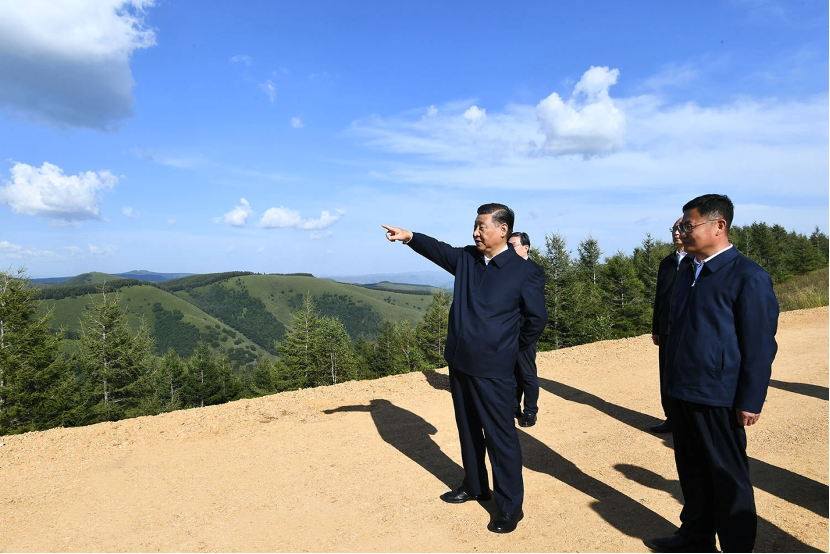
(图片来源:Foreign Policy)
2、在“美丽家园”和“美丽中国”愿景的指导下,过去10年里,中国在低碳能源、绿色发展方面取得了明显的成就。中国的森林覆盖率从14.5%稳步提高到25.5%。中国的新造林地约占世界总量的25%。地表水三级或以上(适合人类使用)的比例从61.4%增加到84.9%,地表水五级以下的比例从2012年的11%下降到2022年的1.2%。过去十年,中国年均6.5%的经济增长是由仅3%的能源消耗增长推动的。清洁能源在能源结构中的比例从14.5%稳步上升到25.5%。中国每单位GDP的二氧化碳排放量已经下降了34%。水电、风电、太阳能和生物质能的装机容量在全球排名第一。
The green shift also reflects China's people-centered development principle which is at the center of the central leadership's vision of building an ecological civilization, as it meets people’s aspirations for a “beautiful home” and a “beautiful China”. Guided by this vision, the country has made marked achievements in low-carbon energy development, with the share of clean energy in the energy mix increasing steadily from 14.5 percent to 25.5 percent over the past 10 years. China's average annual economic growth of 6.5 percent over the past decade has been powered by a mere 3 percent annual increase in energy consumption, and the amount of energy the country has saved accounted for nearly half of the global energy savings during the period.
(Oct 19, 2022, “Green development is path to the future: China Daily editorial” China Daily)
China's ecological environment has witnessed a historic turning point over the past decade. China’s CO2 emissions per unit of GDP have dropped 34%.
Installed capacity of hydropower, wind power, solar power and biomass power rank is No.1 in world. China’s forest coverage rate increased steadily from 14.5 percent to 25.5 percent over the past 10 years.
China's newly afforested land accounts for about 25% of the world’s total. The proportion of surface water rated Grade III or above (suitable for human use) increased from 61.4 percent to 84.9 percent, with the portion of surface water rate below Grade v (unfit even for agricultural and industrial use) falling from 11% in 2012 to 1.2% in 2022.
(Jun13, 2022, “China's green achievements in the past decade” China Daily)
3、中国将空气污染的治理与气候应对行动协同推进。碳中和目标的宣布,“降碳”系统带动污染治理与生态系统保护修复等工作。《大气污染防治法》(2015年修订)首次提出将大气污染物和温室气体协同控制。“十三五”规划首次纳入了PM2.5治理的量化目标。“十三五”期间,曾经雾霾严重的京津冀地区PM2.5浓度降幅超过36%,煤炭在一次能源消费中的比例从63.7%(2015年)下降到56.8%(2020年)。“十四五”期间,将持续系统协调推进绿色环保与可持续发展。
The 2015 revision of China’s Atmospheric Pollution Law was the first to propose coordinated reduction of pollution and greenhouse gas emissions. The subsequent 13thFYP included a quantified PM2.5 target for the first time, and the next five years saw efforts to tackle air pollution and climate change – winning wide public support for the latter, and making significant progress on both fronts. The 13th FYP period saw PM2.5 levels in the once smog-plagued Beijing-Tianjin-Hebei region drop by 36%. Strong action on pollution brought about huge changes in energy usage, with coal’s proportion in the primary energy mix falling from 63.7% in 2015 to 56.8% in 2020. That synergy will continue to be emphasised in the coming five years. However, with China having committed to carbon neutrality, cuts in carbon emissions take the lead in this FYP, to in turn bring about reductions in air, water and soil pollution, as well as protection and restoration of ecosystems.
(March 25, 2021. “14th Five Year Plan: China’s carbon-centred environmental blueprint” China Dialogue)
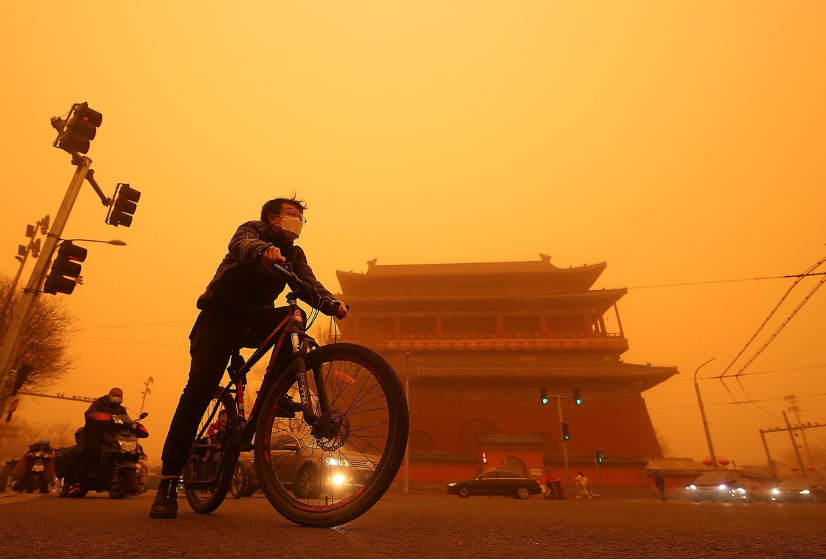
(图片来源:China Dialogue)
Beijing’s strategic bet for its sustainable future is on achieving state-guided and funded technological breakthroughs in, enabling a green transformation at home and global tech leadership in all areas, from renewables to environmental protection equipment.
China’s green ambitions will continue going forward: the forthcoming 14th Five-Year Plan (2021-2025) is expected to drive decarbonization and indigenous tech innovation, however, without proposing overly ambitious climate actions.
China’s ambitions should be taken seriously: building on past successes (e.g., in wind, solar and e-mobility), China strives to assume global leadership in green technologies and sustainable solutions.
(Jan 07, 2021. ““Greening” China: An analysis of Beijing’s sustainable development strategies.”Merics)
4、近几十年来,中国一直在努力加强环境立法和环境权利意识,以改善人权状况。中国已将环境权纳入其人权保护体系,在2009年发布的第一期《国家人权行动计划》中明确了环境权。随后于2012年、2016年和2021年发布的三个国家级行动计划中,中国持续提高人们对环境保护的认识,以及人们参与和监督环保的能力。在2021年至2025年的第四个计划中,环境权利保护被置于与经济、社会和文化权利以及公民和政治权利同等重要的地位。
China has made consistent efforts to bolster environmental legislation and awareness of environmental rights in recent decades in a bid to improve human rights. On July 28, the United Nations General Assembly passed a resolution recognizing the right to a clean, healthy and sustainable environment as a human right. Tang Xianxing, deputy director of the Human Rights Center at Fudan University, said at an online side event to the ongoing 51st session of the UN Human Rights Council on Friday that China has included environmental rights into its system of human rights protection, which is of benefit in giving people their environmental rights. He said the country clarified environmental rights in the first issue of the National Human Rights Action Plan, which was released in 2009, before international law, and China's Constitution or laws, officially recognized environmental rights as human rights. In the three subsequent State-level action plans released in 2012 ,2016 and 2021, China continued to improve people's knowledge of environmental protection, as well as their ability to join in and supervise. “In the fourth plan, which runs from 2021 to 2025, environmental rights protection has been placed on a par with economic, social and cultural rights, as well as civil and political rights,” Tang said.
(Sep29, 2022, “Decade of efforts to strengthen environmental laws.” China Daily)
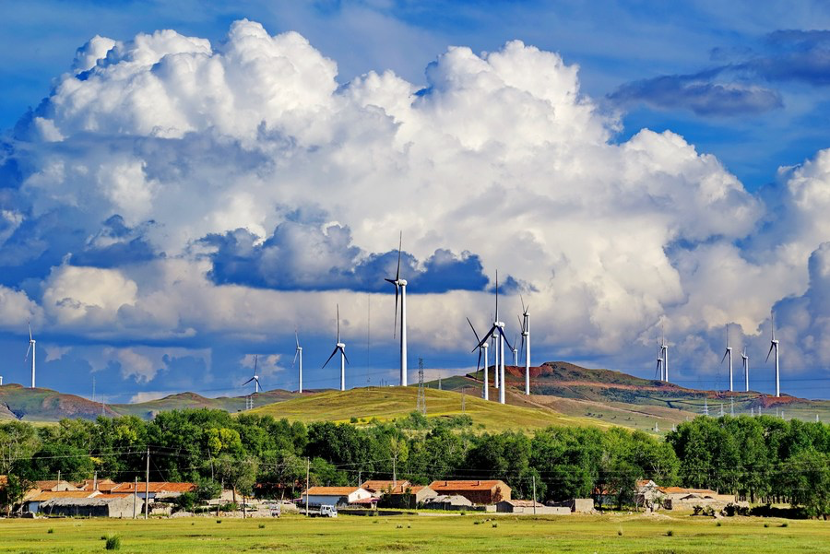
(图片来源:China Daily)
Since 2018, listed companies in China have been encouraged to disclose ESG information under the Listed Company Governance Code. China’s central bank, the People’s Bank of China, issued a pilot guideline to financial institutions in 2020 on environmental information disclosure.
In February, new measures were implemented to impose annual ESG reporting requirements on businesses that were considered to be major emitters of pollutants and publicly traded companies that had been penalized for environmental violations within the past 12 months.
(October 6, 2022, “China moves to standardize fragmented ESG reporting landscape.” Thomson Reuters)
二、十年飞跃之中国的绿色发展倡议与国际合作
1、2020年9月,中国郑重宣布将提高国家自主贡献力度,采取更加有力的政策和措施,二氧化碳排放力争于2030年前达到峰值,努力争取2060年前实现碳中和。该承诺被视为应对气候变化的重要进展,如果中国达成这一目标,全球气温升高的幅度将缩减0.2-0.3摄氏度。作为一个新兴大国,中国的承诺也极有可能推动其他主要碳排放国采取类似措施应对气候变化。
While speaking on video to the United Nations General Assembly (UNGA) on Sept. 22, China’s President Xi Jinping said that his country will hit peak carbon emissions before 2030 and become carbon neutral by 2060. China’s new commitment is seen as a key development in the fight against climate change, and the most significant climate policy move in recent years. Prior to this announcement, the country’s target, set during the 2015 Paris climate deal, was to reach peak carbon emissions by 2030.
This announcement comes as countries around the world consider embarking on green economic recoveries in the aftermath of the COVID-19 pandemic. If China achieves its new carbon neutrality pledge, it will single-handedly lead to a better environmental outcome in the decades ahead for the world, according to the Climate Action Tracker.
(September 29, 2020, “China Pledges to Become Carbon Neutral by 2060.” Global Citizen)
China's 2060 carbon neutrality pledge is expected to curb global temperature rise by 0.2-0.3 degrees Celsius by 2100 in comparison with its previous commitment under the Paris Agreement. This would help move the international community closer to achieving the Paris Agreement goal of keeping the global temperature increase to 1.5℃ or less, relative to pre-industrial levels.
(March 19, 2022, “Turning Carbon Neutrality Vision Into Reality.” China Daily)
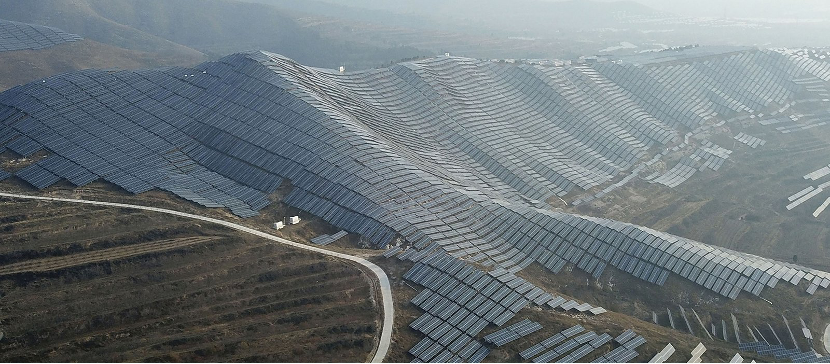
(图片来源:Global Citizen)
2、中国积极寻求与其他国家的气候合作。在2021年的第26届联合国气候大期间,中美发布《中美关于在21世纪20年代强化气候行动的格拉斯哥联合宣言》,达成气候合作协定,包括成立工作组和减少甲烷和二氧化碳排放。中欧在十余年的能源建设合作后,建立了国家排放交易体系。在格拉斯哥联合国气候大会上,中欧还在缓解气候变化方面达成了《可持续金融共同分类目录报告——气候变化减缓》。
China and the US released a joint declaration on tackling climate change during the ongoing COP26 in Glasgow, including setting up a working group and reducing methane and CO2 emissions. Officials and analysts said the declaration highlighted that China-US cooperation is the only right choice, noting it is a significant move on global climate actions and also sends strong positive signals for the success of the COP26.
China and the US on Wednesday released the China-US Joint Glasgow Declaration on Enhancing Climate Action in the 2020s. The two sides said they appreciated the work done so far and pledged to continue working together and with all parties to strengthen the implementation of the Paris Agreement. On the basis of the principle of common but differentiated responsibilities and respective capabilities as well as taking into account national conditions, enhanced climate action will be taken to effectively address the climate crisis.
(November 11, 2021, “China-US Glasgow declaration ‘key step in the right direction’ on global climate actions, prevents decoupling worst scenario” Global Times)
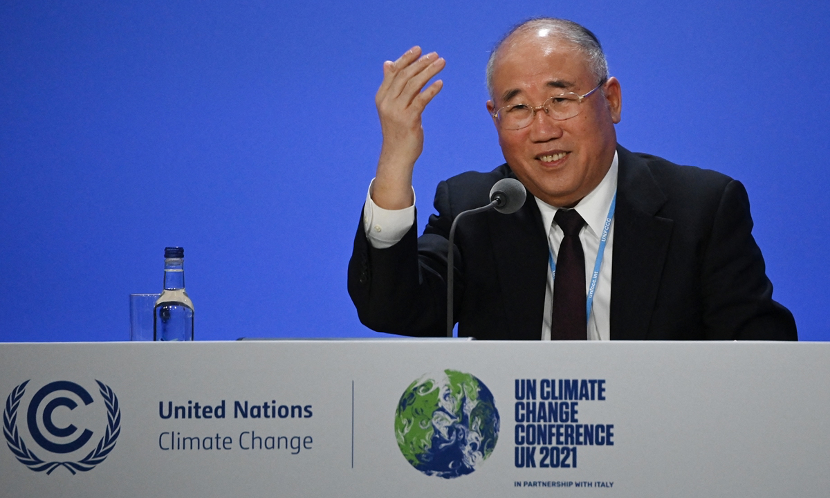
(图片来源:Global Times)
EU climate policy chief Frans Timmermans said it was “really encouraging” to see China and the US working together. “It shows also that the US and China know this subject transcends other issues. And it certainly helps us here at COP to come to an agreement”, he added.
UN Secretary General Antonio Guterres said the announcement was “an important step in the right direction.”
(November 11, 2021, “COP26: China and US agree to boost climate co-operation” BBC News)
The EU and China have achieved some success in climate engagement. For example in July last year China launched its national emissions trading system after nearly a decade of cooperation within EU-funded capacity building projects or in November 2021 at COP26 the EU and China reached a common ground taxonomy in relation to climate change mitigation. Some in Brussels have also regarded, somewhat wishfully, the EU’s own Green Deal announcement and Western pressure as an instigation for President Xi Jinping’s September 2021 pledge to reach carbon neutrality by 2060 and end financing for overseas coal projects.
(September 25, 2022, “EU-China climate cooperation + China's new Special Representative for Central and Eastern Europe.” Merics)
3、自“一带一路”倡议提出以来,中国逐渐建立了更加强大的政策体系,以使“一带一路”更加绿色。近年来,我国对“一带一路”沿线国家和地区可再生能源项目的投资不断增长,中国与29个“一带一路”国家达成了南南气候合作协议,提高“一带一路”沿线国家的绿色融资能力,共同实现低碳发展目标。
Since the launch of the initiative nine years ago, China has established an increasingly strong policy system to make the BRI greener, Zhao said, citing a guideline jointly issued by the ministry and three other government bodies in March as an example. The guideline aims to see Chinese enterprises involved in the BRI beef up their capacities in promoting green development by 2030. By then, the country will also see an increasingly improved system for environmental risk control in overseas projects.
With agreements for South-South climate cooperation reached with 29 BRI countries, he said, China has provided materials and jointly built low-carbon demonstration zones to help developing economies ramp up their capabilities in coping with global warming. He said China will ramp up cooperation on green BRI development in some key sectors. Measures will be rolled out to enhance the capabilities of BRI countries on green financing to help realize their low-carbon development goals.
(June 15, 2022, “Green BRI to Push Global Low-Carbon Drive.” China Daily)
Belt and Road Initiative International Green Development Coalition
One of the avenues for increasing the environmental sustainability of the Belt and Road Initiative is the Belt and Road Initiative International Green Development Coalition (BRIGC or The Coalition).The Coalition was launched during the 2nd Second Belt and Road Forum for International Cooperation which took place in Beijing from 25th to 27th April 2019. The Coalition is an open, inclusive and voluntary international network which brings together the environmental expertise of all partners to ensure that the Belt and Road brings long-term green and sustainable development to all concerned countries in support of the 2030 Agenda for Sustainable Development. The current set-up of The Coalition involves 134 partners including 26 Environmental Ministries of UN Member States.
(“The Belt and Road Initiative International Green Development Coalition (BRIGC)”, UN Environment Programme)
Efforts to go green are playing out in the real world too. Last year saw more BRI investments in non-fossil than fossil fuel projects, and the first half of this year saw no new investments in overseas coal power projects, a first since the BRI began in 2013. China’s moves in Bangladesh to distance itself from remaining coal power projects and ICBC’s decision to pull out of the Sengwa coal power plant in Zimbabwe also demonstrate the trend. This shift away from climate-harming projects also makes economic sense, as electricity from new solar power is already up to five times cheaper than from new coal power.
(August 18, 2021, “What China’s new guidelines on ‘green development’ mean for the Belt and Road” China Dialogue)
编辑:徐亚晖 王妍妍
审核:武一琪 张立荣

